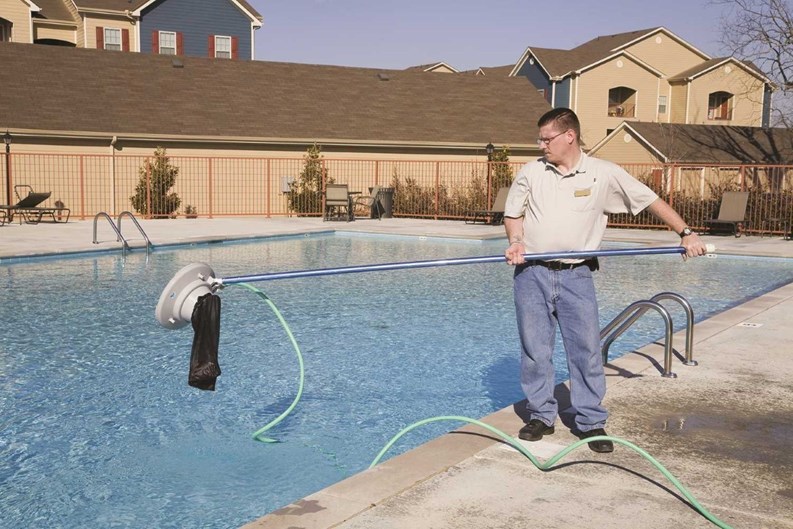The amenities found at New England’s condominium communities can run the gamut from glamorous to the mundane. Some of the larger communities are virtual resorts with enough real estate—and revenue—to offer riding stables, golf courses, ski lifts, an airstrip for private planes or a marina with boat slips. More typically, suburban communities provide a clubhouse and fitness center, and maybe a pool. For small developments, especially in urban locations, an important amenity may just be a parking space or laundry room. Amenities that are the icing on the cake for unit owners, however, can create ongoing challenges for management, as both an extra responsibility and potential controversy.
Tom Wood, CEO at JA Wood Management of Lexington, Massachusetts, contends that space alone is a precious commodity for many of his properties. “In Watertown we have a 56-unit community with loft-style condos and 22-foot ceilings. It was converted from a commercial, office building that had never been used as such. It’s filled with young professionals and families and it’s right on the Charles River bike path. It’s one of a couple of our properties that has a dedicated ‘bike room’ that is really popular.”
Storage and Recreation
Although one would think that a bike room wouldn’t need much maintenance, Wood notes that “someone inevitably asks, ‘Can we put our stroller in there?’ or skis or camping gear or whatever. But it’s not meant to be a storage room, it’s set up with tire pumps and bike shelves and benches.”
“In another property with a bike room,” he continues, “we set up a permitting system with stickers on residents’ bikes. We can then purge bikes without stickers… they’ll get sold or donated.”
More complicated is the trend towards an on-site gym. Wood says, “We have two properties with sizable gyms, and you have to assess how safe they are. Too often, boards or trustees don’t want to put money into updating equipment. We had a property on the North Shore that needed new equipment but under the previous management, there had been no funds put aside for gym upgrades. We took over the management there about five years ago and discovered they didn’t have the correct reserve funding.
“Once we got them to where they needed to be, with a reserve study, the upgrade to the gym is now in place. There’s a new floor, treadmills… about 12 pieces of equipment plus a studio area for classes. You have to update the reserve study every three years to cover ongoing upkeep, aside from emergencies. This upgrade included a new rubber floor for the exercise area and a treadmill with safety bars, for ‘aging’ athletes. For properties with a gym, you have to keep it up. When the gym declines, then you have a decline in usage. You have to keep up with the trends… 15 years ago it was cardio equipment and treadmills, now it’s yoga and pilates that people are requesting.”
The association doesn’t necessarily have to pay trainers to lead classes, however. “The association and the unit owners got local instructors,” he says, “to teach classes as an introduction to their business.”
Gentle Enforcement?
With residents eager to fill communal storage areas, management must confront the task of monitoring a storage or bike room. “This monitoring is more successful,” Wood points out, “when your board has a violation process spelled out, although they’ll use a nicer approach, with warning letters and a deadline for clearing out belongings or equipment. The final warning sets a date for when belongings will be disposed of, although if you get that far [with violators] we wind up throwing away real trash.”
The same routine is used for parking violators. “At that loft-condo building in Watertown, we have to monitor the visitor parking spots as well as the assigned resident spaces. Each unit gets two spaces, but sometimes people will use a visitor space if it’s more convenient for them. In the condo rules we have a provision for handling [these] violations along with an explanation in the common area, as to why this can be a problem… that people can get fined, or towed” for parking in the wrong area, whether on or off the condo property.
Creative Re-Use of Space
Jared McNabb, director of operations at Crowninshield Management of Peabody, Massachusetts, contends that “the most difficult amenity to deal with these days is tennis courts, when they fall by the wayside because they just don’t get enough use. What we are seeing now is more demand for a media center. Newer properties are including this—what can be a room in a common area of the clubhouse, just a place for residents to congregate with big-screen TVs, like for sports, or where someone could organize a movie night.”
While tennis may be waning in popularity, the courts might offer other options. McNabb states, “Some communities are considering re-purposing their tennis courts into a dog park or dog run… or even a community garden. The challenge is that any major change in an amenity typically needs a vote of all unit owners, and this can divide a community. When associations start this discussion… things start getting complicated.”
In one example, he relates, “creating a dog run was a concern because the board already had enough of an issue with owners picking up after their dogs [around the property]. Discussion then turned to the idea of transforming the tennis courts into community gardens. This brought up the problem of who would get to use it, since there wasn’t enough space for everyone interested in participating, and a lottery was even considered. The long-term investment of time and energy… managing garden plots each year, seemed like a big commitment and responsibility.” While any change to an amenity is challenging, a group of dedicated dog owners or gardeners could make these ideas fly, McNabb contends.
Some of the easier, and perennially popular amenities that McNabb has encountered include kiddie playgrounds. “I have a community with a playground that’s enclosed with fencing and a ground surface comprised of recycled tire chips. It’s been there several years with no extra maintenance or resurfacing needed. In another town, I work with a property that has a greenway and rec path running through the middle. The board had to approve an easement for it,” he notes, but that was the extent of work involved. It added an amenity that someone else is responsible for.
The Pool Solution
McNabb addresses the issue of pools, noting, “They seem to have staying power, and the seasonal ones are not terribly difficult to maintain.” Communities with pools inevitably enlist professional pool services. “The issue usually comes down to staffing, if lifeguards are required, and that is mandated on the local, town-by-town basis, at least in Massachusetts.”
Having professionals monitoring the community pool has become a standard practice. Melissa Murphy, vice president at American Properties Team of Woburn, Massachusetts, points out that “every pool now has to have a certified pool operator (CPO) in Massachusetts. If you don’t comply, the local board of health can come down and take away your (pool) certification, so our regional maintenance staff or managers… have that certification.”
She reports that it’s not only easier, but safer, to have professionals take care of most amenities. “A [condo’s] gym may have three stationary bikes,” or a huge recreational complex, but the issues of maintenance and liability are the same. “Do you lease equipment or outright buy it? At one of our properties, a trustee was a member of a local gym, and he found a good deal on used equipment but boards have to decide,” she states, about assessing used equipment, and savings versus safety.
“With tennis courts, we can put up the nets, but you need to hire contractors to do the actual upgrades, such as resurfacing or fencing.” She agrees with other managers that “tennis courts are usually the least-utilized area at a property. The result is… some of them have become tot lots, or a dog run or pet park….”
Murphy observes that amenities, in general, are increasingly being dogged by liability issues, “There are more frivolous claims [around pools, gyms and common facilities],” she notes. “The biggest trend is that more people will sue you for anything. These days, you need a disclosure statement for people using exercise facilities… and don’t call it a gym, call it an equipment room.” This implies a more “use at your own risk” situation.
Where properties have clubhouse facilities, pools or fitness and recreational equipment, she reports, “We try to address waiving of liability right in the rules and regs.”
Marie Auger is a Massachusetts freelance writer and a frequent contributor to New England Condominium.







Leave a Comment